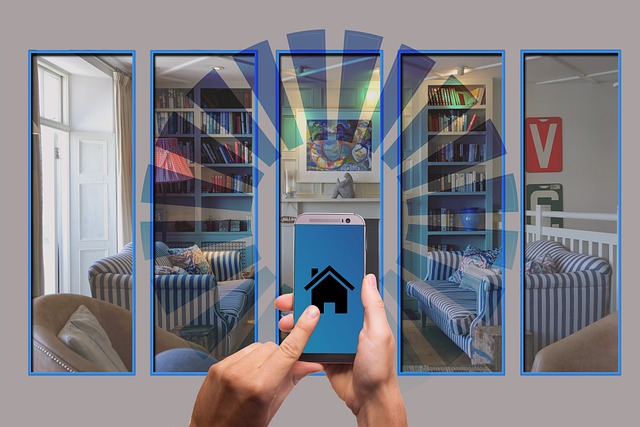As the global urban population is expected to explode to 68% of the world by 2050 according to UN estimates, challenging cities: traffic congestion, pollution, resource stress and inequality are part of the reality. Enter smart cities – an amalgam of cutting-edge technology and urban planning intended to provide efficient, sustainable and liveable environments. By combining sensors, data analytics and artificial intelligence, smart cities aren’t just reacting to problems, they’re anticipating and preventing them.
In this comprehensive blog post, we delve into how technology is altering urban existence via smart cities. We will explore key technologies driving this paradigm shift, real-world benefits, potential challenges and inspirational case studies. Whether you’re a city influencer, city living expert or tech pioneer, these tips will help you succeed in the cities of tomorrow.
What Are Smart Cities? A Basis for a City Innovation
A smart city is a city that uses information and communication technologies (ICT) to become more operationally efficient, communicate with its citizens and improve their quality of life. It is not flashy gadgets but interconnected systems that make cities more alive – adapting in real time, like a living organism.
Evolution and Key Drivers
- Historical Roots: Dates back to the early 90’s with early IoT experiments though it took hold after 2010 with big data and cloud computing. IBM introduced the concept of Smarter Planet in 2008, and it has set off the global program of work for IBM.
- Global Scale: One of the main reasons is that over 1,000 cities around the world are now pursuing smart strategies, according to the Smart City Index 2023 by IMD. Investments amounted to $189 billion in 2022 (MarketsandMarkets) – propelled by the UN Sustainable Development Goals (SDGs) for Inclusive, Resilient Urban Areas.
- Core Pillars: Sustainability (Energy – Green), mobility (Transport – Smart – System), Governance (E-government/E-governance) and Liveability (Health & Safety).

From traffic cameras to utility meters to public wifi access points, smart cities take advantage of every source of data we use in our everyday lives to optimize everything from energy use to emergency response. The result? Cities where the whole is greater than the sum of its parts (less waste and greater equitable outcomes)
Key Technologies Powering Smart Cities
Five hot technologies are driving intelligent urbanization: Each functions in concert to build a solution that integrates the data pipeline to convert raw data into actionable intelligence.
1. Internet of Things(IoT): The Sensory Grid of the City
IoT devices, or sensors that are embedded in infrastructure, collect huge amounts of data, which form the “nervous system” of smart cities.
How It Works: According to Statista, the number of IoT devices is already in the billions (with an anticipated increase to 75 billion in 2025) and they have the ability to track air quality, water levels and structural integrity in real time.
Urban Applications:
- Waste Management: Smart bins of Barcelona report when they are full, optimising collection routes and reducing fuel consumption by 30%.
- Public Safety: IoT is utilized in earthquake-prone cities like Tokyo for early warnings so people can evacuate the area in seconds.
- Energy Efficiency: Energy efficiency is achieved by dynamic smart grids in Copenhagen, minimizing blackouts by 40 percent.
Impact on Living: Improvement of the quality of life that is to say smarter mayor and county residents can have cleaner streets, dependable services and notifications that are tailored to individual needs (e.g. “Risk of flooding in your area – reroute now.”)
Challenges: Cyber security – susceptibility of IoT could breach city-wide transmissions – but this is being alleviated by standards such as those from the IOT Security Foundation.


2. Artificial Intelligence (AI) and Machine Learning: Situation Simulation
From predicting trends to automating processes to personalizing services, AI is capable of analysing IoT data and making cities proactive instead of reactive.
Recent Developments: One of the most remarkable developments of AI platforms such as Google’s DeepMind come as platforms that control traffic signals, but also predictive policing systems in Los Angeles that reduce the crime-prone areas in the city by 20%.
Key Applications:
- Traffic and Mobility: Singapore’s AI system forecasts traffic congestion and adjusts lights to reduce commute by 15% – saving commuters 100 hours per year.
- Healthcare Integration: We wear our face and length to connect to DNA for medical purposes, during COVID-19 in Seoul, AI traced contacts in 10x speed compared to different cities, if information can be passed to the city’s health network in case of outbreak.
- Resource Allocation: AI under Dubai predicts the need for water resources to prevent water shortage in a desert metropolis.
Better Everyday Living: Visual aisle navigation apps detecting your preferences and suggesting sustainable travel routes, or sending notifications to your vicinity for events that may interest you based on your activity, could, for example, bring your community closer hence transforming daily life.
However, there should be considerations for applying AI in an ethical manner, biases in algorithms can affect marginalized groups which is why many cities like Toronto prefer transparent and inclusive models of AI.
3. 5G and Edge Computing: Lightning fast connectivity
5G networks offer ultra-fast connectivity that is to say lightning-fast internet (as much as 100x faster than 4G), low latency – this allows information to be processed in real-time at the ‘edge’ of the network (on devices, not on remote servers).
Deployment Stats: GSMA expects 5G to cover 45% of the world in 2025. Edge computing helps to cut data latency down to milliseconds of travel.
Urban Transformations:
- Autonomous Vehicles: 5G is the backbone at the core of self-driving shuttles in Helsinki, which talk to the infrastructure to assist in making our roads accident-free.
- Smart Buildings: HVAC systems are optimized by real-time monitoring in New York’s skyscrapers hence cutting energy bills by 25%.
- Public Services: Assisted Leisure; Augmented reality or digital signage for guiding tourists, first responders or for accessibility within crowded areas.
Benefits for Residents: Effortless streaming, remote work from park-space, and an unparalleled emergency response – transforming cities into centres of innovation.
However, dubious spectrum allocation and high infrastructure costs restrict 5G rollout in developing regions, although recently there has been increased clarity on the advantages of rolling out 5G in these regions, often at a reduced cost per user.
4. Big Data Analytics and Blockchain: Data Driven Governance
Big data crunches petabytes of city data to find ways to improve it, and blockchain provides secure accounts that can never be affected with malicious alteration.
Growth Projections: Considering market forecast, the smart city big data market is expected to grow to $100 billion by 2027 according to Fortune Business Insights.
Applications:
- E-Governance: Estonia’s digital Ids are built on a blockchain that enables snapshot voting and other services seamlessly – improving the trust among citizens.
- Sustainability Tracking: Amsterdam utilizes big data to track carbon footprints, which has helped them aim for the policies to reduce its carbon footprints by 20% since 2010 particularly.
- Equity Tools: Analytics also allow for the identification of underserved areas and deployment of improved public transport to these areas in order to better serve low-income areas.
Daily Impact: Blockchain applications that offer a flexible form of transparent city budgets will help residents to hold officials accountable to encourage participatory democracy.
Privacy is polarizing – a new level of GDPR-style regulation is necessary to enable protection while not hindering innovation.
5. Green Technologies: Eco-City Green Infrastructure
Renewable energy, smart materials and circular economy principles come to make cities carbon-neutral.
Innovations Spotlight: Roads in the Netherlands could be integrated with solar power to generate power for 500 homes per kilometre.
Key Uses:
- Energy Harvesting: Masdar City, Abu Dhabi is based on 100% renewables and is utilizing AI to balance the solar and wind generation.
- Water Management: Singapore uses IoT sensors to recycle wastewater for NEWater, which supply 40% of Singapore’s water needs.
- Green mobility: Bike-sharing systems proposing electric vehicle recharging points in Paris decrease the dependency on vehicles by 15%.
Lifestyle Benefits: Cleaner Air (reduces pollution by up to 30% in piloted zones) and climate resilient infrastructure.
Not only is the initial cost a barrier, but, in the long term, committed energy savings far outweigh the initial cost.
Benefits: How Smart Cities Help Make Cities Better Places to Live
The tech trifecta provides real life wins:
- Efficiency Gains: According to World Bank data, there is up to 30% decrease in energy use and 20% reduction in traffic delays.
- Improved Safety and Health: With AI surveillance, crime will decrease by 15-20%; through air quality monitoring, the problems of respiratory ailments are avoided.
- Economic Boost: Smart cities are attractive to talent and investment – $2.5 trillion added to global GDP by 2026 according to Juniper Research
- Inclusivity: Apps created in multiple languages and accessible designs empower all residents by bridging digital divides.
For urban dwellers, this translates to less pressure on nature, more free time and sustainable development – cities as vibrant ecosystems.
Challenges and Risks: How to navigate the Smart City Hurdles
No revolution is flawless. Smart cities grapple with:
- Privacy and Surveillance: Unceasing gathering of data implies potential risk of “Big Brother” scenarios, 70% of citizens are concerned about misuse according to a survey done by Deloitte.
- Digital Divide: Low-income areas remain behind in connecting, adding to inequality – only 50% of global urban poor have broadband access.
- Implementation Costs and Failures: The project for Toronto’s Sidewalk Labs was delayed nearly half a year in 2020 for privacy fears at a cost of millions.
- Cyber Threats: It is possible for a single hack to paralyze traffic or power grids; strong defences are not negotiable.
Solutions? Community involvement, ethical frameworks (i.e., EU’s GDPR for Cities), phased rollouts to provide equitable progress.
Real World Case Studies Smart Cities in Action
- Singapore: Tops up the Smart City Index with its “Smart Nation”. AI traffic management and drone delivery has turned it into the model for Asia.
- Barcelona: IoT sensors saved 75 million EUR in water (2010-2020); now expanding to an AR cultural tours.
- Songdo, South Korea: A ground up smart city armed with pneumatic waste tubes and sensors everywhere – that uses 40% less energy than traditional cities.
These are examples which prove scalability, which is inspiring replication at global level.
The Future of Smart Cities: Trends to Look Forward to
By 2030, 6th generation (6G), AI-human hybrid and climate adaptive tech will make smart cities turn into “resilient ecosystems.” Expect virtual town halls and bio-inspired designs (like self-healing roads). Collaboration between governments, technology companies and citizens will all be part of the equation for inclusive futures.
Conclusion: Can We Create a Better World Together Tomorrow?
Smart cities are tech that is changing the face of urban life from messy sprawls into harmonious hubs – efficient, green and citizen-centric. By leveraging IoT, AI, 5G, big data and sustainable innovations, it’s not a case of surviving urbanization, it’s a case of thriving in urbanization. The risks can be minimized by thinking carefully before taking the chances.
Ready to get involved? Advocate for Smart initiatives in your city and/or explore career opportunities in urban tech. Visit our website for the “Smart City Starter Guide”: What’s one crazy smart thing that your city needs? Let’s shape the future!
Discover more from Tech Trend Insights
Subscribe to get the latest posts sent to your email.
